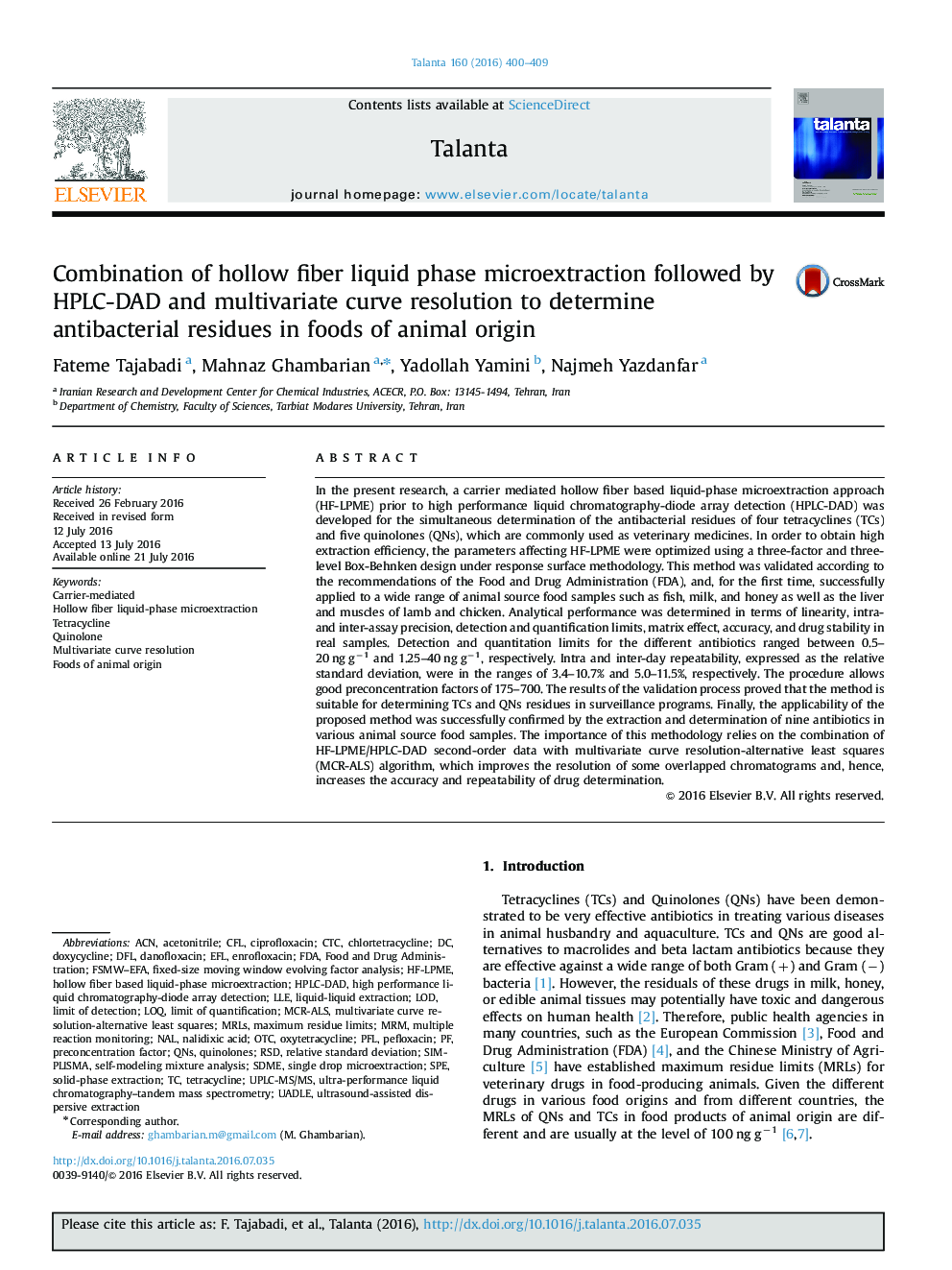| Article ID | Journal | Published Year | Pages | File Type |
|---|---|---|---|---|
| 1243274 | Talanta | 2016 | 10 Pages |
•Multivariate curve resolution for the first time coupled with HF-LPME/HPLC-DAD.•With the help of MCR-ALS algorithm two overlapped chromatograms were separated.•Simultaneous determination of four TCs and five QNs antibacterial residues.•Determination of nine polar antibiotics in complex matrixes of animal origin foods.•HF-LPME/HPLC-DAD/MCR-ALS validated based on FDA recommendation.
In the present research, a carrier mediated hollow fiber based liquid-phase microextraction approach (HF-LPME) prior to high performance liquid chromatography-diode array detection (HPLC-DAD) was developed for the simultaneous determination of the antibacterial residues of four tetracyclines (TCs) and five quinolones (QNs), which are commonly used as veterinary medicines. In order to obtain high extraction efficiency, the parameters affecting HF-LPME were optimized using a three-factor and three-level Box-Behnken design under response surface methodology. This method was validated according to the recommendations of the Food and Drug Administration (FDA), and, for the first time, successfully applied to a wide range of animal source food samples such as fish, milk, and honey as well as the liver and muscles of lamb and chicken. Analytical performance was determined in terms of linearity, intra- and inter-assay precision, detection and quantification limits, matrix effect, accuracy, and drug stability in real samples. Detection and quantitation limits for the different antibiotics ranged between 0.5–20 ng g−1 and 1.25–40 ng g−1, respectively. Intra and inter-day repeatability, expressed as the relative standard deviation, were in the ranges of 3.4–10.7% and 5.0–11.5%, respectively. The procedure allows good preconcentration factors of 175–700. The results of the validation process proved that the method is suitable for determining TCs and QNs residues in surveillance programs. Finally, the applicability of the proposed method was successfully confirmed by the extraction and determination of nine antibiotics in various animal source food samples. The importance of this methodology relies on the combination of HF-LPME/HPLC-DAD second-order data with multivariate curve resolution-alternative least squares (MCR-ALS) algorithm, which improves the resolution of some overlapped chromatograms and, hence, increases the accuracy and repeatability of drug determination.
Graphical abstractFigure optionsDownload full-size imageDownload as PowerPoint slide
